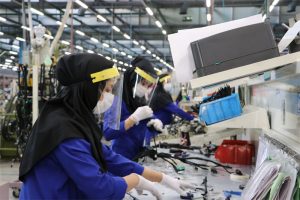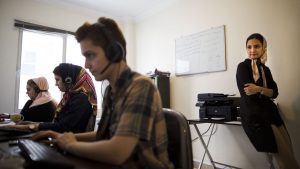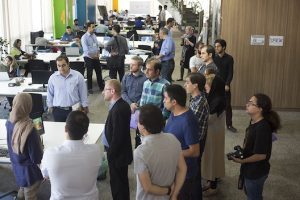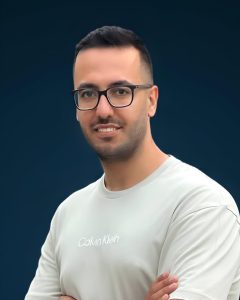
AI Investment Analyst Report: The Untapped Potential of Iran’s HealthTech Sector
Executive Summary
This report offers a detailed analysis of the Iranian HealthTech market, highlighting significant, yet complex, investment opportunities. Despite facing international sanctions and economic hurdles, Iran’s HealthTech sector is on a growth trajectory, fueled by a youthful, tech-savvy population, a pressing need for enhanced healthcare services, and a robust pool of local talent in technology and medicine.
Our findings suggest that while the market is still in its nascent stages, it presents a high-risk, high-reward proposition for discerning investors with a long-term outlook. The most fertile ground for investment lies in AI-driven solutions targeting critical deficiencies in the current healthcare infrastructure. Key areas of opportunity include medical imaging analysis, predictive analytics for disease management, and the development of personalized medicine platforms.
This analysis profiles the top 20 HealthTech companies in Iran, offering insights into their operational focus and the domestic investment landscape that supports them. A comparative benchmark against regional HealthTech leaders—the UAE, Saudi Arabia, and Israel—reveals disparities in funding and regulatory sophistication but also underscores Iran’s considerable untapped potential.
Our central investment thesis advocates for a strategic approach focused on seed-stage investments in agile Iranian HealthTech startups that have demonstrated a strong product-market fit within the local context. The report identifies potential investment targets and outlines the inherent risks, including regulatory ambiguity and geopolitical instability, while proposing mitigation strategies centered on collaboration with local expertise.
Table of Contents
ToggleDecoding Iran’s $15 Billion HealthTech Ecosystem
Key Finding: As of late 2025, Iran’s HealthTech sector is a burgeoning, domestically-fueled market valued within a broader $15.22 billion health industry. Projected to grow at a 4.08% CAGR to reach $22.71 billion by 2033, the sector’s trajectory is underpinned by a strategic government push toward digitalization and a formidable local talent pool. For founders and investors, this presents a landscape of significant, albeit complex, opportunity defined by local capital and a pressing need for innovation.
Market Dynamics and State-Backed Ambition
The core driver of this growth is a deliberate national strategy. With total health expenditures expected to rise by 30% by 2030, the Iranian government is actively championing the integration of AI with the ambitious target of cutting healthcare costs by up to 40%. This top-down support, combined with a strong base of STEM graduates, is creating fertile ground for companies focused on efficiency and advanced diagnostics. The government’s vision extends beyond domestic improvement, aiming to position Iran as a regional hub for health technology and medical equipment manufacturing.
The Vanguard: Key Companies and Technologies
Several companies are emerging as leaders, carving out niches in high-demand areas. In the crucial field of AI-driven diagnostics, AIMedic (founded 2020) stands out with its AI-powered medical imaging and natural language processing tools, which are already being deployed in hospitals both within Iran and in neighboring countries. Similarly, ZiDoctor is leveraging AI for diagnostic assistance and specialist referrals in precision medicine.
The regulatory landscape is being shaped by licensed private operators like Barakat E-Health Company (BEHCo), a key player in telehealth and mobile health services. On the infrastructure front, ASA Digital Health is building an integrated digital health ecosystem, backed by a partnership with Italian company GEKO, focusing on hospital interconnectivity. This is complemented by consumer-facing platforms like the telemedicine service Pezeshket and AI-driven wellness provider BeeaaB Health, indicating a multi-faceted market development. Specialized, high-tech firms like CardioCan are also targeting critical areas such as cardiovascular diagnostics.
Investment Landscape: A Closed-Loop Ecosystem
Capital for this growth is overwhelmingly local, a direct consequence of international sanctions that limit foreign investment. The ecosystem is supported by a triumvirate of domestic capital sources. Prominent venture capital firms like Sarava and Shenasa are actively funding HealthTech ventures. Government entities, including the Iran National Innovation Fund (INIF), provide essential grants and loans. Early-stage funding is also available from angel investor groups such as Karaya Angel Investors. For entrepreneurs, this means the pathway to funding, while challenging, is well-defined within national borders.
Regional Benchmarking: An Emerging Contender
A comparative analysis highlights Iran’s position as an emerging ecosystem with significant ground to cover. While Iran’s startup volume is growing, it trails far behind the high-density markets of the UAE and Israel. The funding gap is stark: against Israel’s $1B+ and the UAE’s $500M+ in VC funding over the past five years, Iran’s investment figures are considerably more modest and constrained. However, this gap also signals a less saturated market with potential for high-growth returns for early movers who can navigate its unique challenges. While Israeli startups dominate AI diagnostics and genomics, Iran’s focus on telemedicine and digital health platforms directly addresses its large, underserved domestic market needs.
Iran’s HealthTech Market Analysis
A Nascent but Growing Landscape
As of late 2025, Iran’s HealthTech sector comprises approximately 218 startups. The ecosystem is characterized by early-stage companies, with an average of 14 new ventures launched annually over the past decade.
Funding: A Locally Driven Environment
The funding for Iranian HealthTech is predominantly sourced domestically. The venture capital market, while growing, was estimated at approximately $28.13 million in 2025. Key domestic investors include:
Shenasa Venture Capital: A significant player with a broad portfolio that includes HealthTech.
Sarava Pars: A prominent venture capital firm backing major Iranian tech companies.
Iran National Innovation Fund (INIF): A government-backed entity providing crucial financial support to knowledge-based enterprises.
Foreign investment remains minimal due to international sanctions, creating a less competitive landscape for early-stage investors who can navigate the complexities of the market.
Key Growth Drivers
The primary catalysts for the growth of Iran’s HealthTech sector include:
A Large, Young, and Tech-Literate Population: With over 80 million people and a significant youth demographic, there is a strong and growing demand for digital services.
Government Focus on a Knowledge-Based Economy: The Iranian government is actively encouraging the technology sector through initiatives and funding to diversify the economy.
Pressing Need for Healthcare Modernization: Existing healthcare infrastructure faces challenges of inefficiency and resource constraints, creating a demand for innovative solutions.
Abundant STEM Talent: Iran produces a large number of graduates in science, technology, engineering, and mathematics, providing the necessary human capital for a thriving tech ecosystem.
AI’s Transformative Potential on Healthcare Infrastructure
Iran’s healthcare system, a mix of public and private providers, grapples with infrastructural limitations that AI is well-positioned to address. The government has expressed a clear interest in leveraging AI to reduce healthcare costs by as much as 40% and improve efficiency. The implementation of AI is seen as a pivotal strategy for managing chronic diseases and modernizing the healthcare system.
Promising Sub-Sectors for AI Investment:
Medical Imaging Analysis: AI-powered tools can significantly enhance the speed and accuracy of diagnostics in a system with a high volume of medical imaging.
Predictive Analytics: With the rising prevalence of non-communicable diseases, AI can play a crucial role in preventative care and managing public health crises.
Personalized Medicine: AI-driven platforms offer the potential to deliver tailored healthcare solutions, a nascent but high-potential area in the Iranian market.
Telemedicine: Platforms like Dr. Next, which has already secured $3 million in funding, demonstrate the demand for remote consultations, especially in rural areas.
However, the sector faces challenges, including the need for a clearer regulatory framework, improved data infrastructure, and overcoming organizational resistance to technological adoption.
Competitive Landscape
Pinpointing a definitive top 20 list with detailed, verified funding and founder information is challenging due to the private nature of many Iranian startups. The following table represents a list of notable HealthTech companies in Iran, compiled from available public data.
| Company | Focus | Noteworthy AI Application (if known) |
| Paziresh24 | Online appointment booking and consultation. | Potential for AI-driven doctor recommendations. |
| iMD | Clinical resource platform for healthcare professionals. | |
| DoctorAbad | E-learning and educational tools for medical professionals. | |
| Dr. Next | Telehealth platform. | Integration with wearables for chronic care. |
| Madario | AI-driven nutrition platform for diabetes management. | Personalized nutrition plans. |
| CardioCan | AI-enhanced early diagnosis of cardiovascular diseases in cancer patients. | Machine learning analysis of ECG signals. |
| Aimedic One | AI-powered care coordination solutions. | Medical imaging and EHR analysis. |
| KIO Medical | AI-based diagnostic tools for medical imaging. | Automated image analysis for neuroimaging. |
| SarirAI | Development of high-performance AI models for clinicians. | Enhancing diagnostic accuracy. |
| ZiDoctor | AI-powered diagnostic assistance and specialist referrals. | Facilitating quick and accurate diagnoses. |
| Fitnesskar | Mobile app for fitness and bodybuilding exercises. | |
| Saman Salamat | Medicine tracking and tracing to detect counterfeit drugs. | |
| Pabepa | Health and wellness platform. | |
| My Bodybuilder | Fitness and nutrition application. | |
| Doctoreto | Online doctor appointment booking. | |
| SinaCare | Health and wellness services. | |
| Teb Call | Telemedicine services. | |
| Tebazdor.ir | Remote medical services and online consultation. | |
| Hayaat | Distributor of advanced medical equipment. | |
| Pardazesh Gostar Havin | Smart dental clinic management software. |
Key Investors: A Domestic Affair
The investment landscape in Iran’s HealthTech sector is dominated by local players. International investors are largely absent due to geopolitical and economic sanctions.
Domestic Venture Capital Firms:
Sarava Pars: A key investor in some of Iran’s most successful technology companies, including e-commerce giant Digikala.
Shenasa Venture Capital: With over a decade of experience, this firm invests in high-growth startups across various sectors, including HealthTech.
Rahnema Ventures: Recognized as Iran’s largest venture capital fund by the number of investments.
Government-Backed Funds:
Iran National Innovation Fund (INIF): Established in 2011, the INIF is a crucial source of funding for knowledge-based companies, offering financial facilities with more favorable terms than traditional banks.The fund has been active in supporting the healthcare sector, particularly in response to national health crises.
The presence of domestic investors with a deep understanding of the local market can be an advantage for foreign investors looking for knowledgeable partners.
Regional Benchmarking: Iran in a Comparative Context
A comparative analysis of Iran’s HealthTech ecosystem with regional leaders—the UAE, Saudi Arabia, and Israel—highlights both the challenges and the significant growth potential of the Iranian market.
Data Point Comparison (Estimates for Year-End 2025)
| Metric | Iran | UAE | Saudi Arabia | Israel |
| Number of AI-focused health startups | 30 – 50 | 70 – 100 | 50 – 80 | 150 – 200 |
| Total investment in health AI | $10-20M | $100-150M | $80-120M | $500-700M |
| Maturity of the regulatory framework for digital health | Nascent | Developing | Proactively Developing | Mature |
Israel: A global powerhouse in HealthTech, characterized by a mature and robust ecosystem with a high density of startups and significant venture capital investment. Its regulatory framework is well-established, fostering innovation in areas like digital health and medical devices.
United Arab Emirates (UAE): The UAE is rapidly positioning itself as a regional hub for technology and innovation, with a strong focus on AI.The government has implemented a national AI strategy and is developing a supportive regulatory environment for digital health.
Saudi Arabia: Driven by its Vision 2030, Saudi Arabia is making substantial investments in its technology and healthcare sectors. The Kingdom has launched a national strategy for data and AI and is actively developing its regulatory framework for digital health.
Iran: While currently trailing in terms of funding and startup density, Iran’s key differentiators are its large, underserved domestic market and its highly educated, cost-effective talent pool.The potential for growth is substantial if the existing barriers are addressed.
Investment Thesis and Recommendations
Investment Thesis: Cultivating Local Champions in an Underserved Market
The investment thesis for Iran’s HealthTech sector hinges on a long-term, value-oriented strategy. The primary opportunity lies in identifying and nurturing early-stage, innovative companies that are developing localized, AI-driven solutions to Iran’s most pressing healthcare challenges. An investment in this sector is a stake in the high-potential human capital of a large, emerging market that is currently insulated from intense international competition. Success will require patience and a deep understanding of the local landscape, with the potential for significant returns as the market matures and economic conditions potentially improve.
Potential Investment Targets: A Focus on Impact and Scalability
While comprehensive due diligence is essential, we recommend focusing on startups exhibiting the following characteristics:
Companies Addressing Critical Infrastructure Gaps: Startups like CardioCan and KIO Medical, which are developing AI-powered diagnostic tools, are prime examples of companies addressing significant needs in the Iranian healthcare system.
Platforms with a Clear Path to Nationwide Scale: Telemedicine providers and platforms for managing chronic diseases, such as Dr. Next and Madario, have the potential for significant nationwide adoption given Iran’s large and geographically dispersed population.
Strong, Multidisciplinary Founding Teams: Look for teams that combine technical expertise in AI with a deep understanding of the Iranian healthcare sector’s complexities.
Risks and Mitigation Strategies
Investing in Iran’s HealthTech market carries inherent risks that must be carefully managed:
| Risk | Mitigation Strategy |
| Geopolitical and Economic Instability | – Co-invest with reputable local VCs and partners. – Focus on businesses with a strong domestic revenue model and minimal reliance on imports. – Maintain a long-term investment horizon. |
| Regulatory and Legal Uncertainty | – Engage with local legal counsel specializing in technology and foreign investment. – Invest in companies that are proactive in their engagement with regulatory bodies. – Prioritize business models with clear paths to compliance. |
| Limited Exit Opportunities | – Explore exit strategies through acquisitions by larger Iranian technology firms or private equity. – Consider revenue-sharing models and dividends as a means of generating returns. |
| Data Privacy and Security | – Ensure portfolio companies adhere to international best practices for data security. – Invest in teams that prioritize building trust with users and healthcare providers. |
In conclusion, Iran’s HealthTech sector presents a unique and compelling opportunity for investors with a high-risk tolerance and a long-term vision. The confluence of a large domestic market, a skilled talent pool, and a pressing need for innovation creates a fertile ground for growth. Strategic, well-informed investments in the right teams and technologies can not only yield significant financial returns but also contribute to the positive transformation of healthcare for millions of people.
Frequently Asked Questions (FAQ)
1. Which companies are considered the best Iran HealthTech startups or top Iranian startups in this sector?
Based on their market impact, technology, and specialization, some of the best Iran HealthTech startups include AIMedic, a leader in AI-powered medical imaging; Barakat E-Health (BEHCo), a key licensed telehealth operator; ZiDoctor, which focuses on AI-driven diagnostics; and Dr. Next, a prominent telemedicine platform. These companies are at the forefront of addressing critical needs in the Iranian healthcare market.
2. What does the Iran HealthTech startups list for 2025 look like and which areas are they focused on?
The Iran HealthTech startups list for 2025 comprises over 200 companies operating in a market valued at over $15 billion. The ecosystem is characterized by early-stage ventures focused on several key sub-sectors:
AI Diagnostics & Imaging: Companies like AIMedic and CardioCan are developing advanced diagnostic tools.
Telemedicine & Digital Platforms: Pezeshket and BEHCo are major players in remote consultation.
Healthcare Infrastructure: ASA Digital Health is working on hospital interconnectivity.
Personalized Wellness: BeeaaB Health uses AI to create custom nutrition and exercise plans.
3. What is the investment outlook for Iran HealthTech startups in 2025?
The investment landscape for Iran HealthTech startups in 2025 is primarily driven by domestic capital due to international sanctions. The market has strong potential, projected to grow at a CAGR of 4.08%. Key local investors include VCs like Sarava and Shenasa, government-backed entities like the Iran National Innovation Fund (INIF), and angel networks. For founders, this means funding is accessible through local channels, and for investors, it represents a high-growth, less-saturated market focused on solving domestic healthcare challenges.











Post Comment